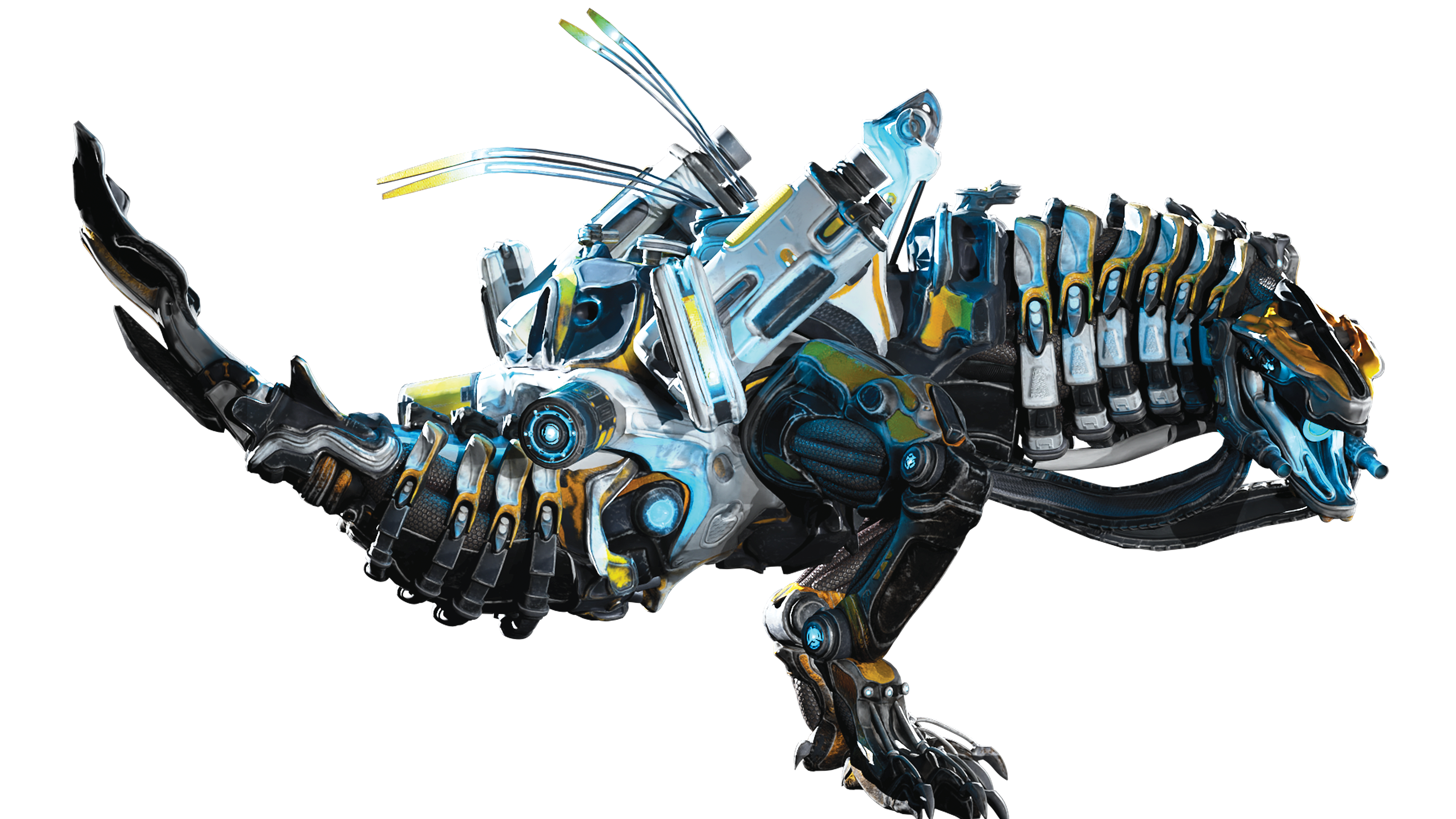NVIDIA is all in on content creation
Remember NVIDIA Studio - primed to dramatically elevate creativity
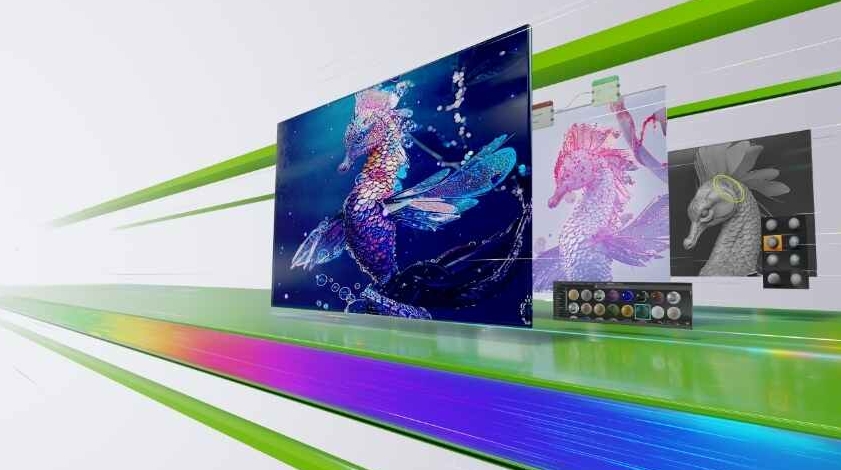
We’re used to associating NVIDIA graphics cards with PC gaming, but that’s set to change this year as they become essential tools for creative pursuits such as 3D rendering, animation, video editing and online streaming.
The reason for this is that some of the most powerful new creative features either require or run much faster on specialised hardware that’s designed for the job, and that hardware is located on the GPU. NVIDIA RTX graphics cards contain dedicated processing cores that are tailor-made for particular computing tasks. Even a blazing fast CPU just can’t compete.
Take AI for instance. In 2022 we saw an explosion of AI-powered features in a range of creative apps, and these are set to continue transforming how we create graphical content. AI-based features across most software packages will run many times faster with an NVIDIA RTX graphics card because it has specialised Tensor Cores that are purpose-built for performing the mathematics used for AI technology.
The other main type of specialised processing cores on RTX cards is Ray Tracing cores, which are really shaking things up in the 3D world. Thanks to this technology it is now possible to get photorealistic, ray-traced lighting in real-time as opposed to having to wait minutes or hours for the scene to render – a total game-changer.
Together, AI tools and real-time ray tracing represent a creative revolution because they’re completely transforming how we work. Soon it will be clear to anyone working in the creative industries that they’re missing out if they don’t have the dedicated hardware to run these amazing technologies, and before you know it you’ll be thinking of GeForce RTX cards as a tool for creators as much as for gamers.
It’s also worth remembering that this is much more than just a hardware product. NVIDIA has built out an extensive software platform for creators called NVIDIA Studio which ensures that you get the very best out of your graphics card. Studio Drivers and SDKs make sure the RTX card works harmoniously with all the big creative apps, and there’s also a slew of very powerful Studio tools for 3D work, streaming, and image creation. It’s a big thing.
So that’s the overview, now let’s drill down into some specifics. Here are five reasons why NVIDIA is going to be a big part of your creative world in 2023:
1. New NVIDIA Studio laptops
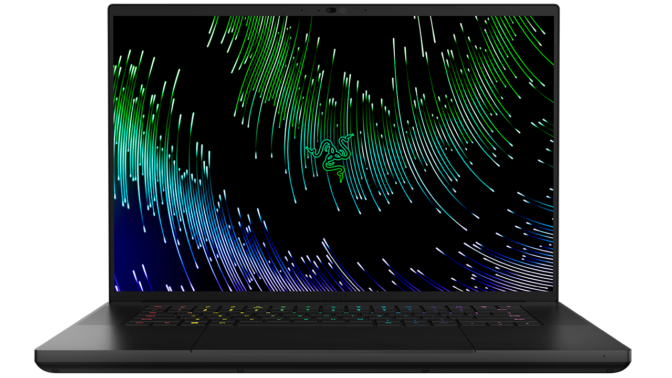
The new NVIDIA Studio laptops are a really amazing product for creatives. You might think of laptops with powerful graphics cards as being heavy and clunky, but that’s not true at all now as recent advancements have enabled manufacturers to fit mighty RTX boards into systems with slim, portable form factors.
NVIDIA Studio laptops are purpose-built for creators so they have glorious colour-accurate displays, great connectivity and plenty of storage. The latest range, based around the 40 Series RTX cards, offer a massive leap in performance compared to the previous generation, which are very capable machines in their own right.
If you’re going to buy a laptop for creative work in 2023, NVIDIA Studio laptops will be on your list. Whether you’re doing 3D work, visual effects, video editing, image creation or live streaming, the dedicated processing cores for AI and ray tracing will make your workflow many times faster. We didn’t mention it before, but 40 Series RTX cards also have purpose-built hardware for video encoding that supports the AV1 streaming codec, so if you’re livestreaming video you’ll see a huge benefit.
You also get DLSS 3 with the latest series of cards, which means even better framerates for real-time rendering. If you haven’t heard of it yet, DLSS is a technology that uses AI to upscale video on the fly. So you can render in low resolution, which is fast, then just before it hits the screen DLSS jumps in and increases the image quality, delivering high resolution video at low resolution framerates.
The newest NVIDIA Studio laptops also have fifth generation Max-Q technologies for optimising power, performance and noise, which helps to maximize battery life and reduce fan noise when you’re doing undemanding tasks. Visit the NVIDIA blog to see the new NVIDIA Studio laptops.
2. 40 Series cards are insanely powerful
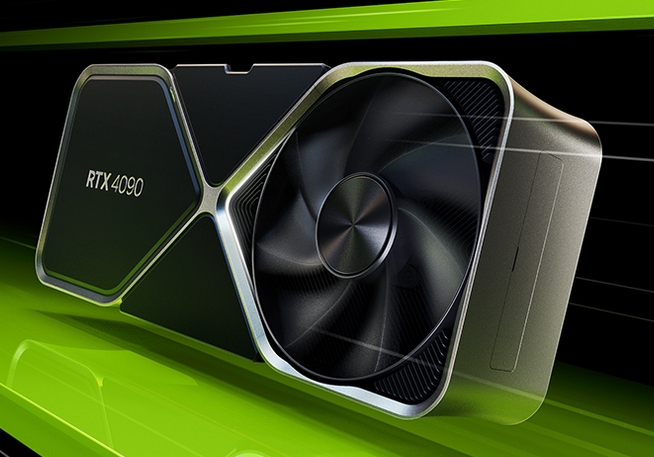
We all know that high-end GeForce graphics cards are hefty pieces of kit, but the 40 Series that came out a few months ago is something else – there are serious performance gains compared to the previous generation 30 Series.
Here’s a run down of some of the improvements you can expect:
- With a GeForce RTX 4070 Ti card, 3D artists can get a performance boost of up to 70 percent compared to the 3070 Ti model in the big software apps such as Autodesk Maya, Blender, V-Ray, and Unreal Engine.
- The fourth generation Tensor Cores are twice as fast as the previous generation, so you’ll see significant performance gains for AI-powered features.
- As we mentioned in the last section, 40 Series cards have dual video encoders that support the AV1 streaming codec. When used in conjunction with apps such as Adobe Premiere Pro, DaVinci Resolve, OBS or Jianying your video is exported twice as fast, and livestream quality can be improved by up to 40 percent.
3. NVIDIA Omniverse is now an even bigger deal
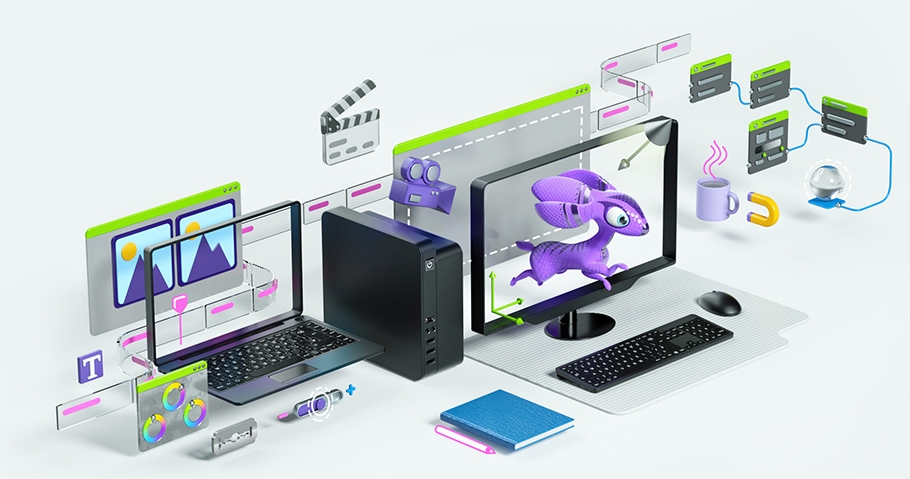
Omniverse is a tool that connects different 3D packages and makes them interoperable, which makes the lives of 3D artists much, much easier. Before Omniverse, if you were using three 3D apps to work on your scene you would have to export the whole thing from each piece of software and then import it into the next one, a laborious and clunky process.
With Omniverse, you can connect packages such as Autodesk Maya, Blender and Unreal Engine and use them together, almost as if they were a single piece of software. Work taking place in one package updates in real time in Omniverse. If you want to work on part of a scene in Blender, for example, you can open up a single model, edit it in Blender, and see how it looks in the full scene in Omniverse.
This is of course transformative for 3D workflows, saving time and enabling teams to replace linear pipelines with collaborative, synchronised working. Omniverse is part of NVIDIA Studio, and you get it automatically with any RTX GPU.
4. NVIDIA Studio apps are better than ever

When you buy a GeForce RTX graphics card or laptop housing an RTX GPU, you get much more than just the card itself; you also get the NVIDIA Studio suite of apps, which is a range of amazingly powerful software that’s growing and improving all the time.
One of our favourite apps is Canvas, which enables you to paint photorealistic landscapes with simple brushstrokes. You just select materials such as rocks, trees or water, and trace an outline of where you would like each to appear in your scene. Canvas then uses AI to generate a landscape that looks like a real place. Soon there will be an update that enables Canvas to generate panoramas that can be imported into 3D software and used as an environment map.
Broadcast is another great app that uses AI to clean up audio and video to improve the quality of your livestreams. It works in real time, isolating your voice and removing background noise. You can even use it to place a different background behind you, and there’s a new eye contact feature that tweaks your eyes to make it seem as though you are looking right into the camera.
An upcoming NVIDIA Studio tool that looks absolutely incredible is RTX Remix. It’s a modding platform that enables you to create modernised versions of classic games—it captures all the game assets and then uses AI to upscale them. NVIDIA has made a fully ray-traced remaster of Portal, Portal with RTX and one day you’ll be able to do something similar to your favourite old games yourself.
5. The rise of the side hustle
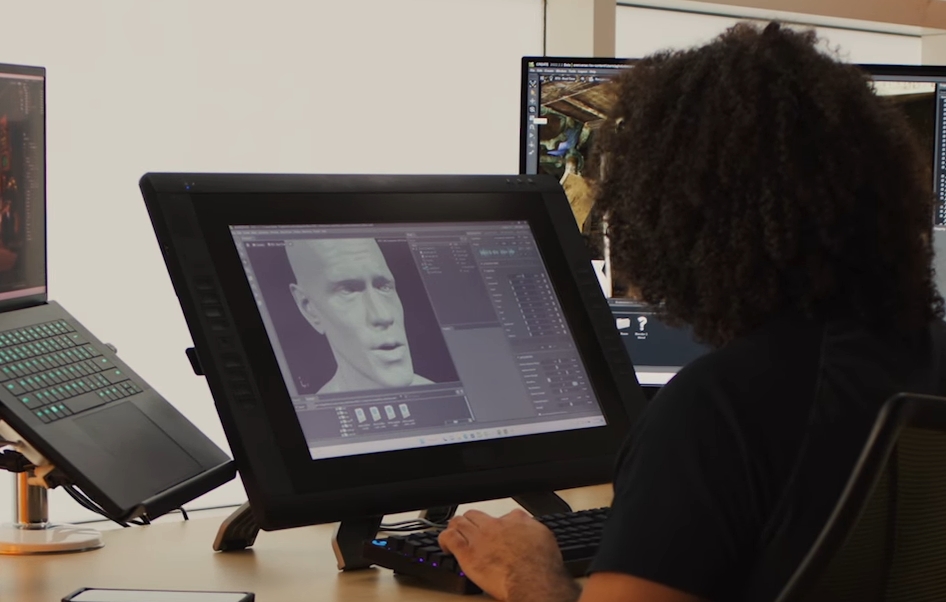
Whether it’s streaming on Twitch, making videos for TikTok or YouTube, or building a following on Patreon, more people than ever are generating an income from expressing themselves online. Making professional-looking videos used to require a lot of expensive equipment, but now you can achieve the same effect with NVIDIA Studio AI tools, an RTX graphics card and ordinary peripherals.
On top of this, NVIDIA provides hundreds of tutorials made by creative professionals so you can boost your skills at your own pace, as well as videos and blog posts that give you an inspiring insight into the working lives of 3D artists, filmmakers, photographers, streamers and other creators. Have a look at NVIDIA’s special side hustle page to get a sense of all the amazing possibilities this technology unlocks.
We’ve only been able to scratch the surface of what RTX technology can do for you as a creator, but hopefully it’s clear that content creation is anything but a side hustle for NVIDIA: it’s now a core part of their mission.

Thank you for reading 5 articles this month* Join now for unlimited access
Enjoy your first month for just £1 / $1 / €1
*Read 5 free articles per month without a subscription

Join now for unlimited access
Try first month for just £1 / $1 / €1
Get the Creative Bloq Newsletter
Daily design news, reviews, how-tos and more, as picked by the editors.

The Creative Bloq team is made up of a group of design fans, and has changed and evolved since Creative Bloq began back in 2012. The current website team consists of eight full-time members of staff: Editor Georgia Coggan, Deputy Editor Rosie Hilder, Ecommerce Editor Beren Neale, Senior News Editor Daniel Piper, Editor, Digital Art and 3D Ian Dean, Tech Reviews Editor Erlingur Einarsson, Ecommerce Writer Beth Nicholls and Staff Writer Natalie Fear, as well as a roster of freelancers from around the world. The ImagineFX magazine team also pitch in, ensuring that content from leading digital art publication ImagineFX is represented on Creative Bloq.
